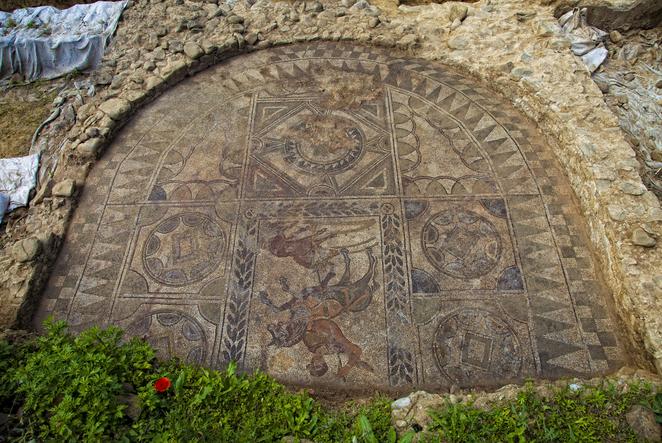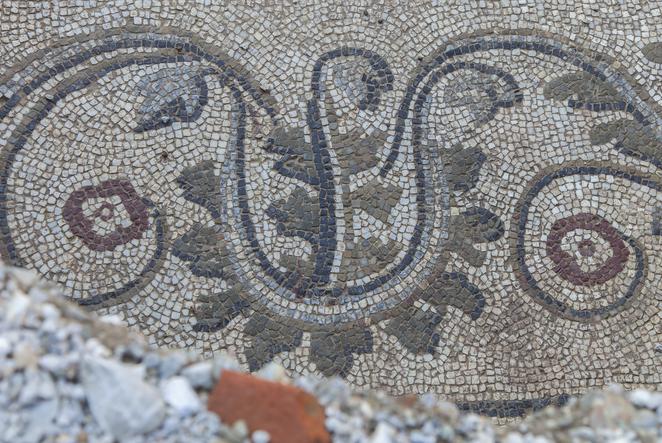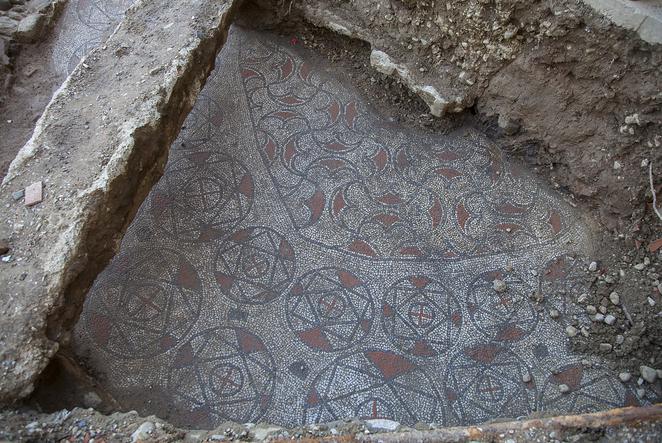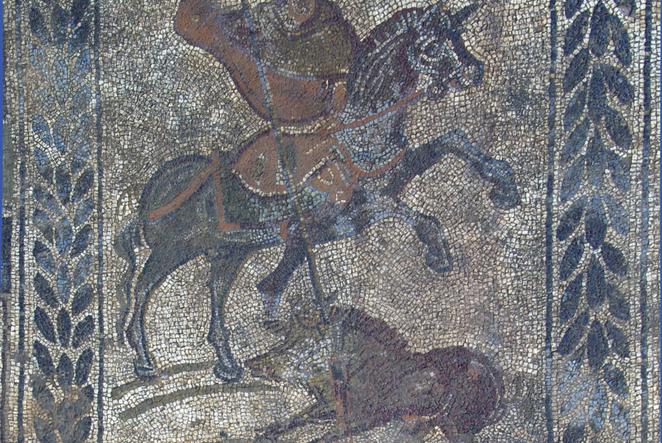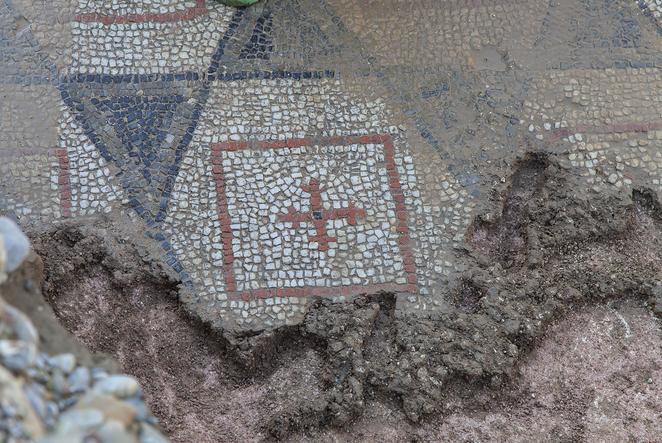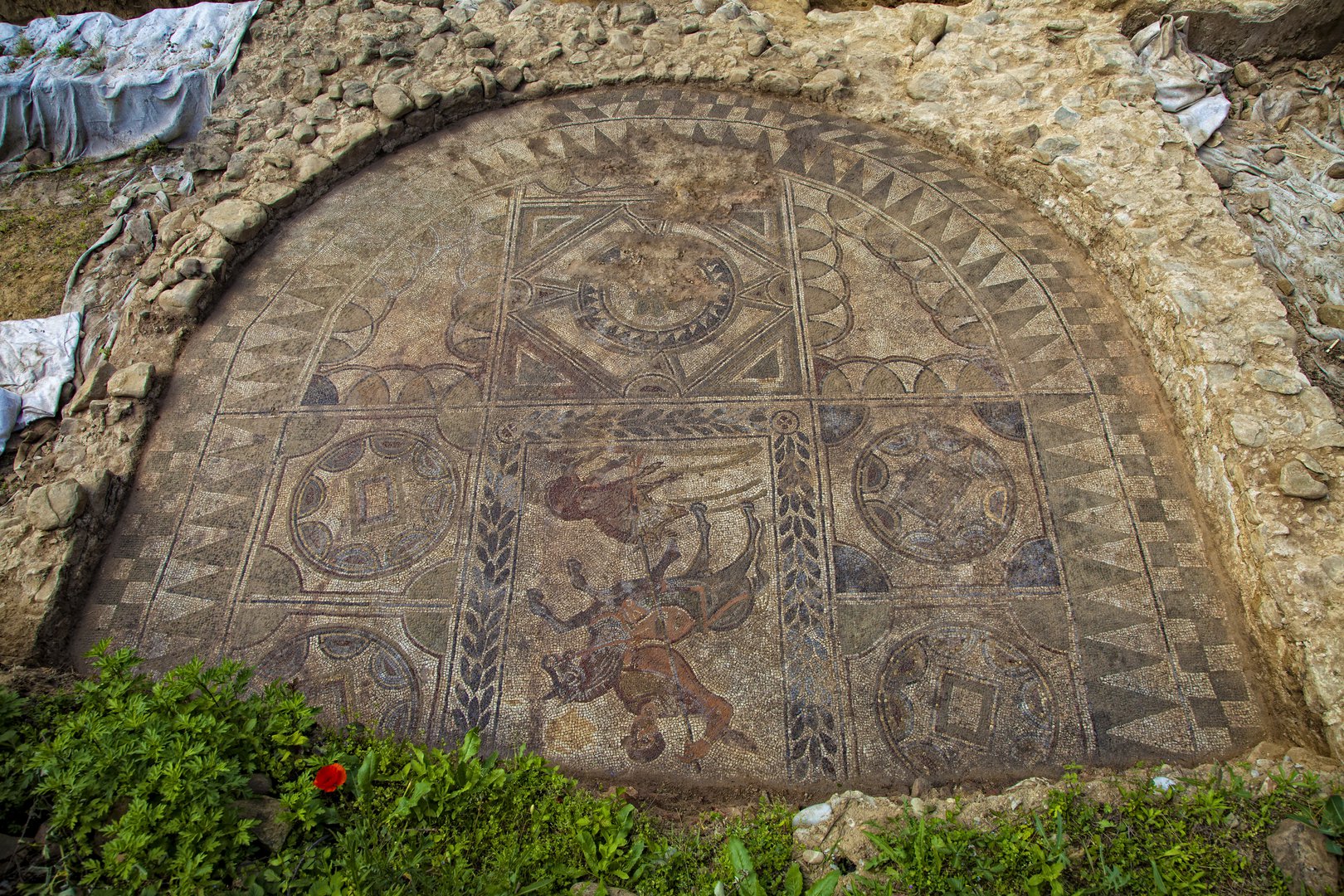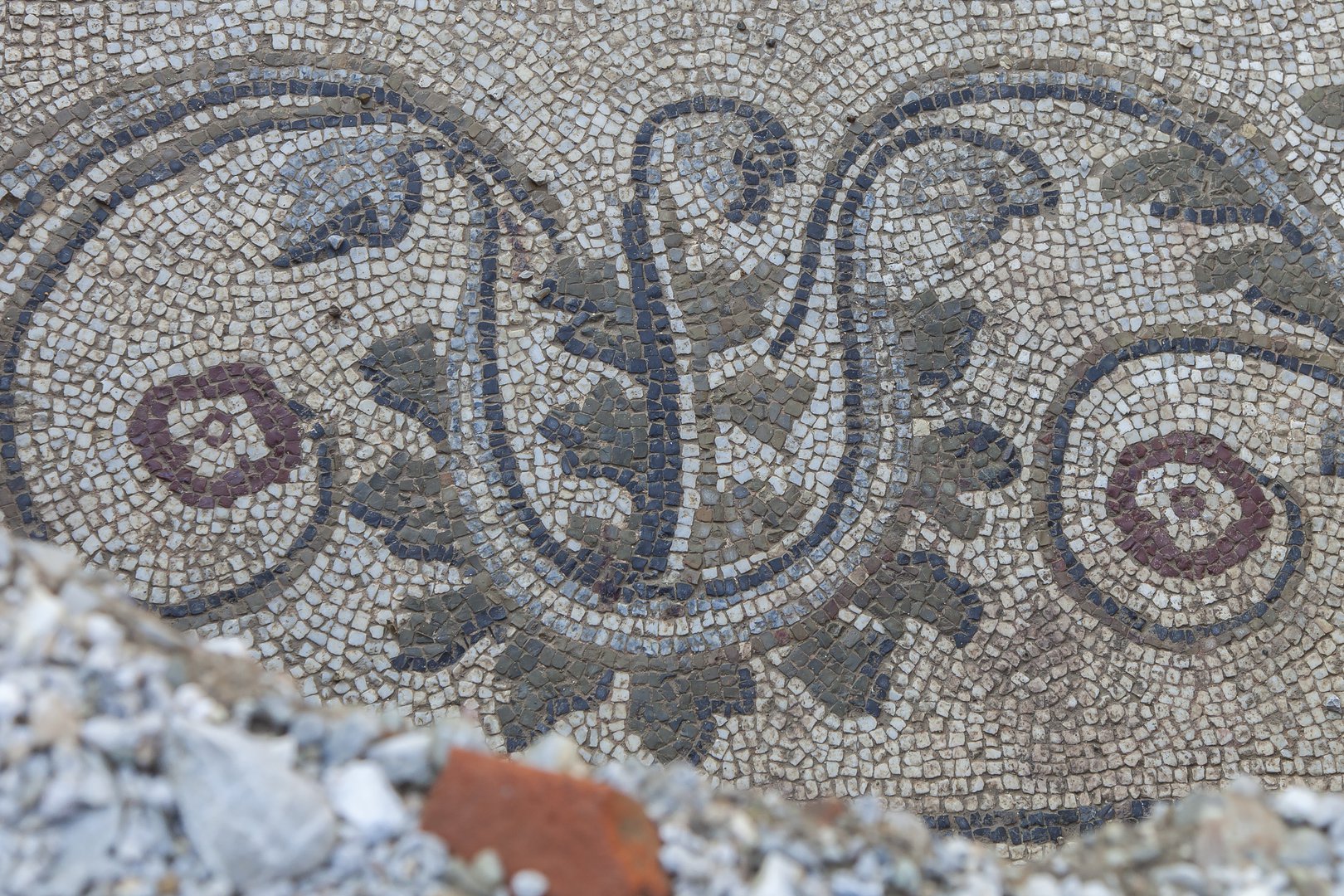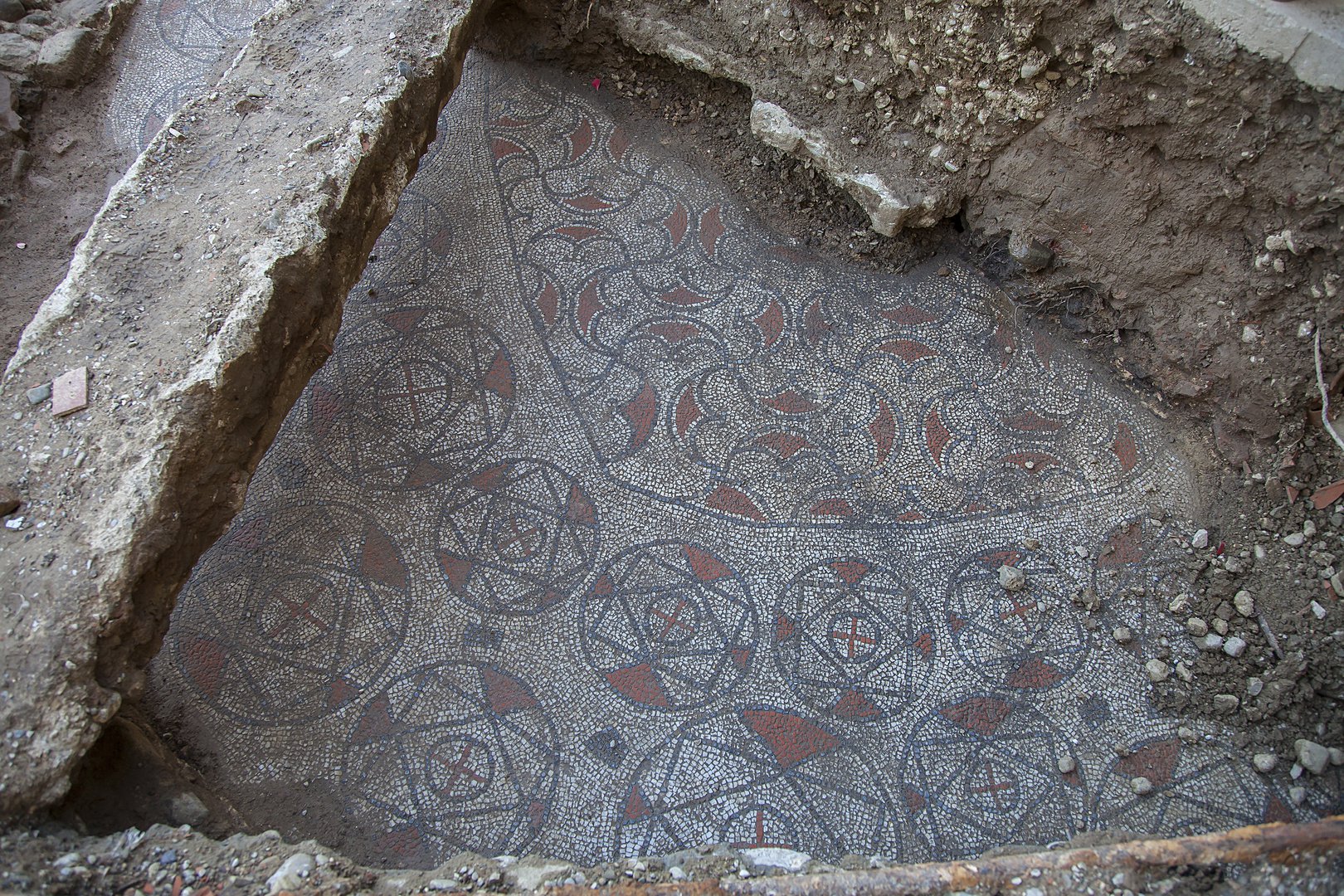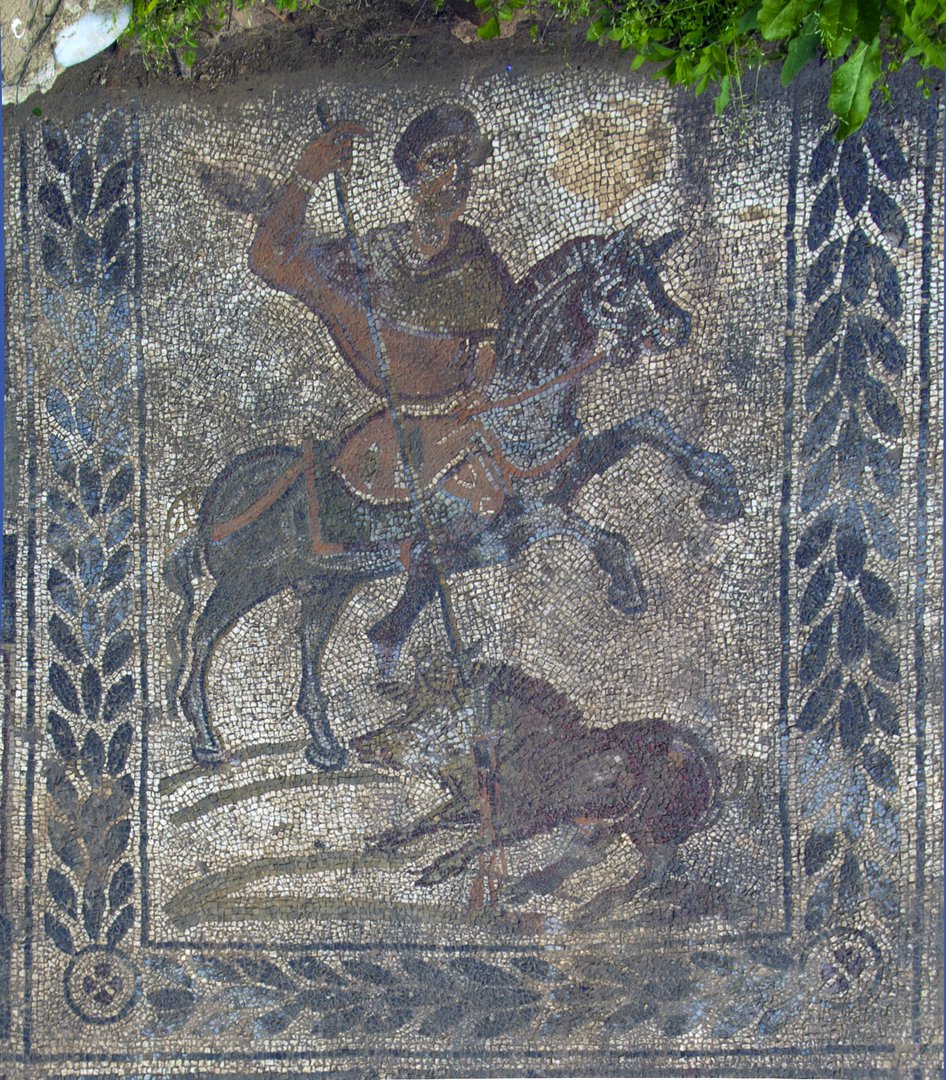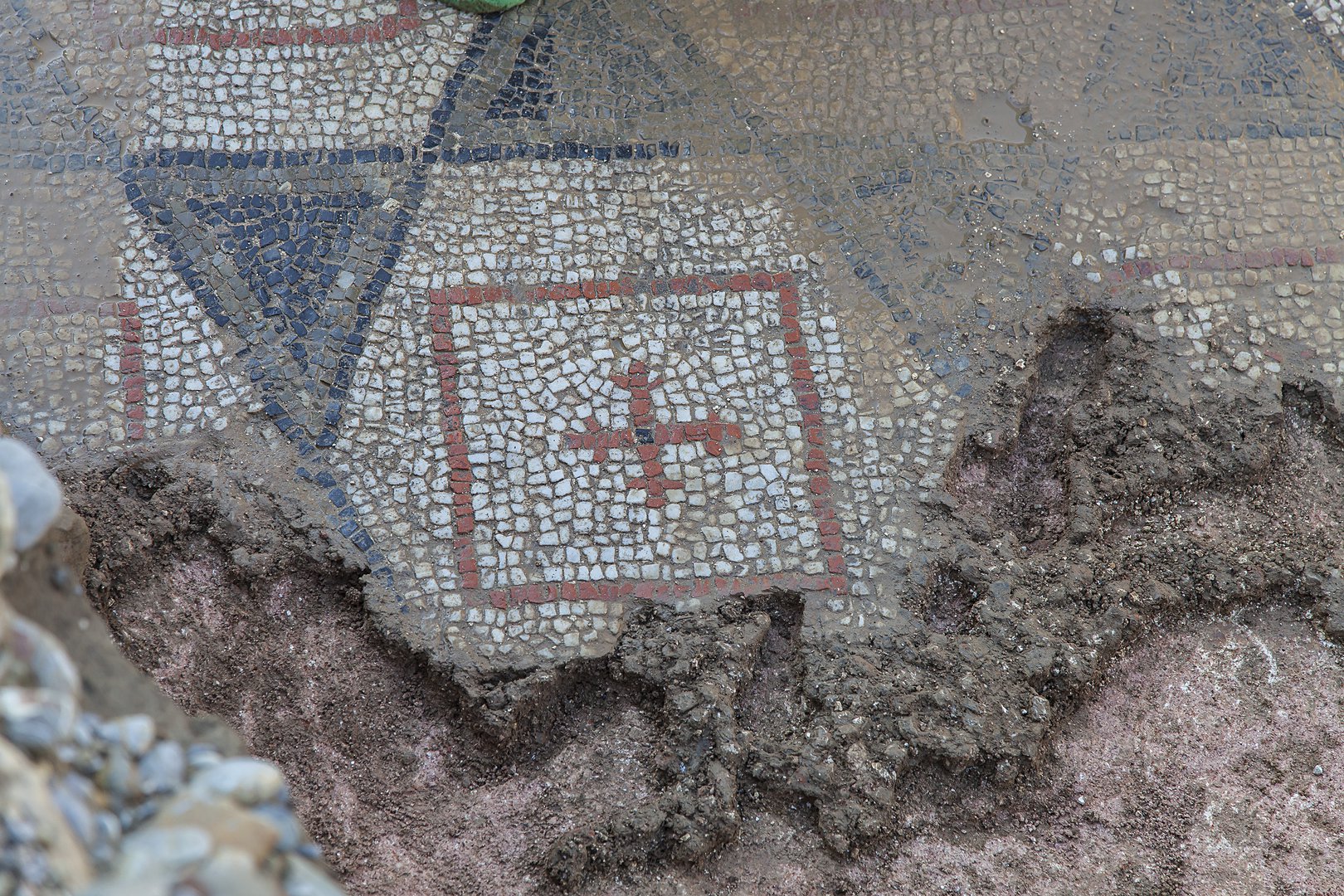Vetti Roman Villa
Archaeological excavations in recent years have brought to light the remains of the Villa belonging, presumably, to the Roman aristocrat Vettio Agorio Pretestato, governor of Tuscia and Umbria before 362 AD. and prefect of Rome until 384, the year of his death as consul. The complex, in Oratorio locality, had nothing to envy to the palaces of Constantinople and Rome. It had a central hexagonal structure, 15 meters high and 30 meters in diameter, surrounded by numerous rooms; in the apsidal one in the center, the nobleman received guests on a semicircular table placed on a mosaic floor depicting the scene of "venatio apri", wild boar hunting, one of the favorite pastimes of the aristocrats during the periods of otium. The remains of the floors of the other rooms show polychrome mosaics with different types of decorations, among which octagons with figures of animals and human busts, frames composed of geometric and plant motifs stand out. During the excavations, the thermal area of the villa also emerged, with the suspension in bricks that supported the tub positioned near the oven that had the task of heating the environment. There is also a fistula on the bottom, a sort of tube, to allow the water to drain. According to the scholars who have followed and deepened the site, in particular Prof. Federico Cantini, scientific director of the excavation, it is one of the important structures of Central Italy and a point of reference from the Late Antiquity, like the buildings of the great capital cities. After all, Pretestato was a figure of undisputed importance in the fourth century and he wanted a villa suited to his rank to spend moments of tranquility and relaxation, in a strategic position halfway between Florence, the seat of the governorate, and the Tyrrhenian coast, where he landed coming from Rome. The attribution to Pretestato was possible thanks to the discovery - in the 1980s at the time of the discovery of the archaeological site during the construction of an orchard - of an epigraph located in the semicircular space intended to house a fountain, in which we read the owner's name. Speaking of otium, Pretestato is also mentioned by Simmaco in his Epistolario, in a letter in which he is reproached for neglect in business and politics for the benefit of relaxation in Tuscany. The Municipality and the University of Pisa, which oversaw the excavations, have been working for some time on a project to enhance the structure that will first bring to light and cover the mosaic with the wild boar hunting scene. There are certainly excellent prospects, being the villa unique in the territory even at a supranational level, comparable, without excessive risk, to the Roman Villa del Casale in Piazza Armerina (Enna).
Information
Address: Via G. Palandri, 45, Oratorio, Limite sull'Arno, Capraia e Limite
GPX coordinates: 43.7483011243,10.9840511988
